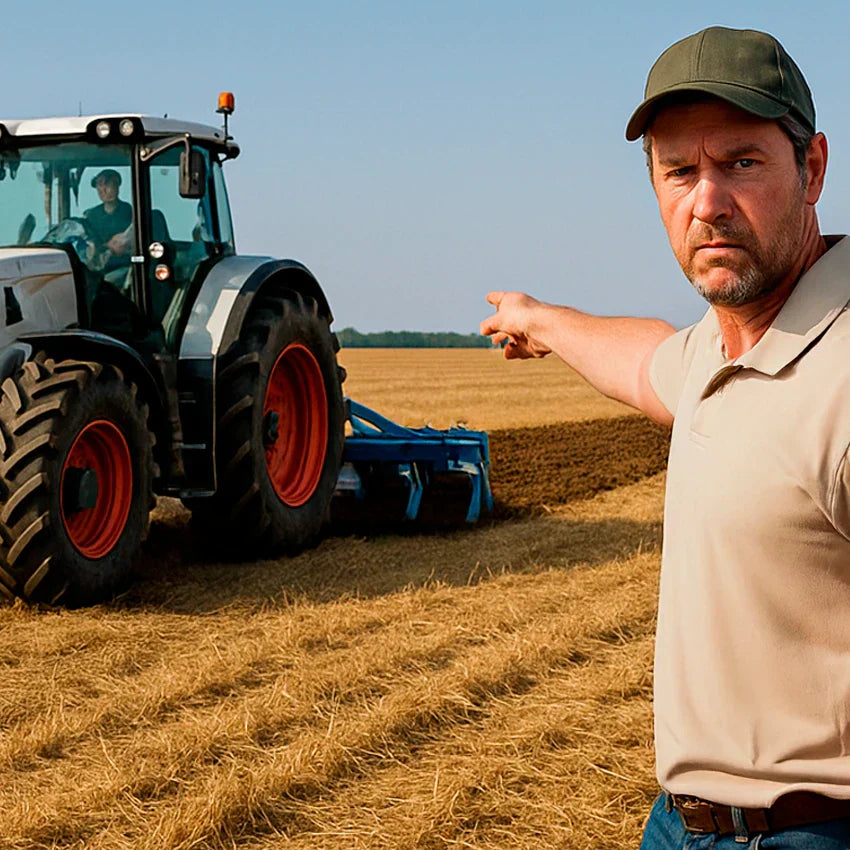Torque or Power: Which Is More Important for Agricultural Tractor Engines?
In the context of agricultural mechanization, especially for tractors, understanding the difference between torque and power is essential to maximize machine performance. While both concepts play distinct roles, they are complementary, and the importance of each varies depending on the task at hand. In this article, we will explore each concept, their practical applications, how they directly influence fieldwork, and how they can be measured.
Torque: Raw Power to Overcome Resistance
Torque is the rotational force generated by the engine to move the tractor. In agricultural engines, torque is crucial for tasks requiring intense force, such as pulling heavy implements or operating on compacted terrains. For instance, when a tractor needs to subsoil compacted soil, torque is the force responsible for keeping the machine moving, even at low engine RPMs.
This force is generated by the combustion of fuel in the cylinders, which pushes the pistons, transmitting the motion to the crankshaft and, through the transmission, to the wheels and/or the power take-off (PTO). Engines with high torque are designed to overcome significant resistance, enabling consistent performance in heavy-duty tasks. Torque is measured in newton-meters (Nm) and is essential in situations where force prevails over speed.
Power: Speed and Operational Efficiency
On the other hand, power measures how quickly work is performed. It represents the combination of torque and rotational speed (RPM), resulting in the ability to generate motion efficiently. Power is critical for operations requiring large area coverage in less time, such as planting or transporting loads, where operational efficiency is paramount.
Power is measured in horsepower (HP) or kilowatts (kW) and is vital for maintaining the required speed during continuous operations, aiming to maximize performance in terms of area worked per hour.
The Relationship Between Torque and Power
Although they are distinct concepts, torque and power are directly related. Power is calculated by combining torque with engine RPM, according to the formula: P = (Torque × RPM) / 5252. In summary, torque provides the force needed to perform heavy tasks, while power determines the speed and efficiency with which this force is applied.
How to Measure Torque and Power in Tractor Engines
The torque and power curves of agricultural tractor engines can be obtained through tests using dynamometers. These tools use the PTO to subject the engine to varying levels of load and RPM, simulating real working conditions and accurately measuring torque and power throughout the process.
Dynamometers for tractor testing via PTO, such as the AG.X Series by AW Dynamometer, are tools used by manufacturers from product development to production lines, ensuring engines meet engineering parameters. At dealerships, dynamometers are used for inspections before delivery to the final customer, ensuring the equipment functions as expected and performing pre-run-in of the engine. This is especially important in low-power tractors, significantly reducing the incidence of cylinder liner issues.
Conclusion
Torque and power are equally important for the performance of agricultural tractor engines, but each has its specific role. While torque is indispensable for overcoming significant resistance and performing heavy tasks, power ensures speed and efficiency in continuous work. Testing tractor engines with dynamometers, such as the AG.X Series by AW, is the most effective way to measure these two forces, ensuring they deliver expected performance and are prepared for various applications.
Article Author:
Valter Henke - General Director
Link to the original article in Portuguese, published on Torqx News: https://torqx.co/pt/blogs/news/torque-ou-potencia-qual-e-mais-importante
Images Torqx version: AGCO










Leave a comment